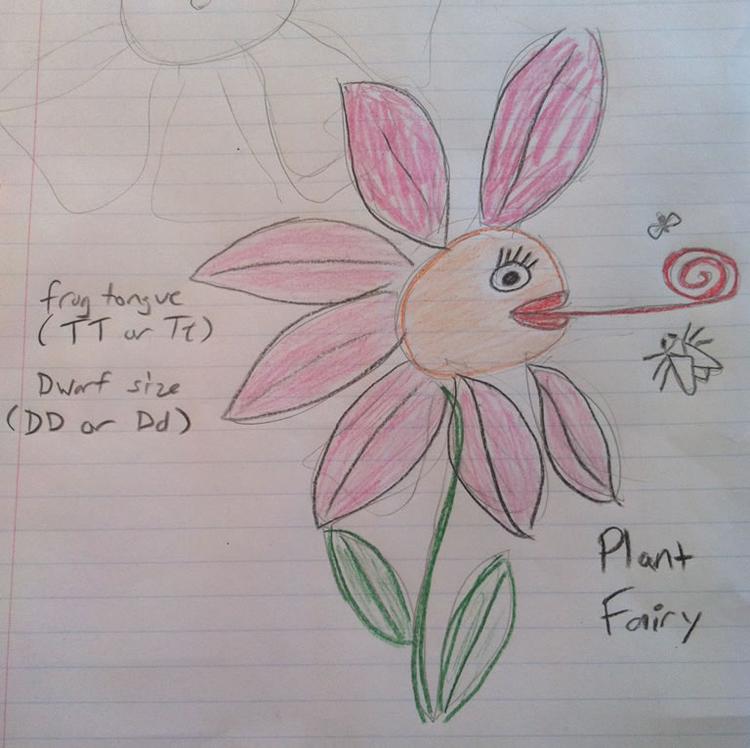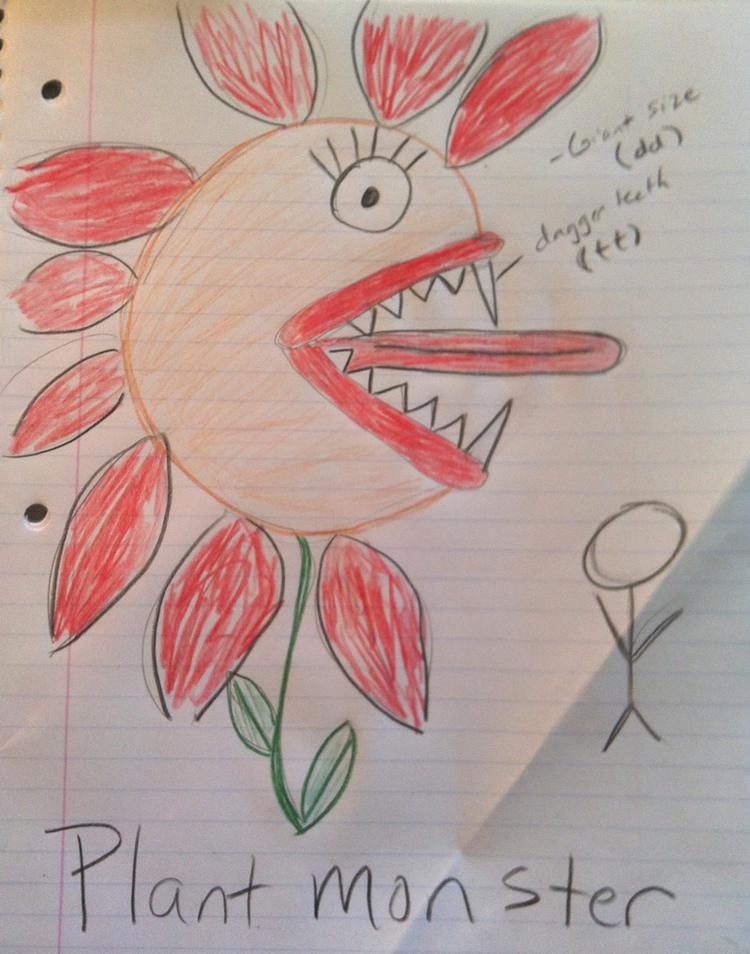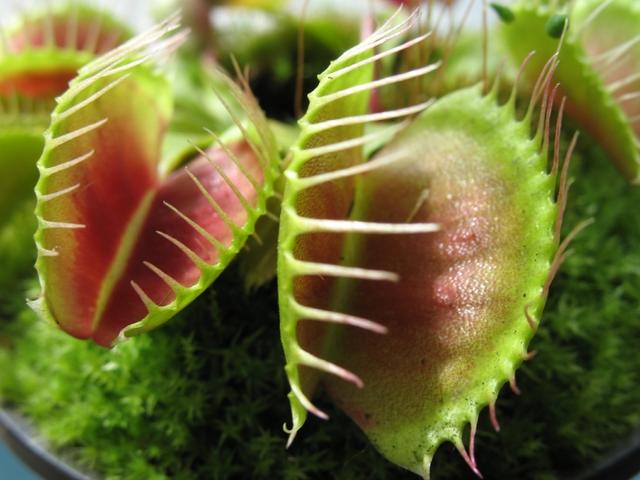Overview
Gregor Mendel was an Austrian monk in the 19th century who uncovered many of the basic principles of inheritance and genetics by his experiments with pea plants. By observing several generations of the plant, he could determine which traits were dominant and which were recessive, as well as identify several patterns of inheritance. He mated different varieties of plants, using a brush to transfer pollen. Mating different varieties, or crossing different genotypes, of a plant is called hybridization.
Mendel started his experiments with purebred plants, that is, identical plants that when mated had offspring with traits identical to their parents (such as having all purple flowers). Purebreds are homozygous for the trait that they exhibit, such as flower color. They may be homozygous dominant (PP=purple flowers) or homozygous recessive (pp=white flowers). When Mendel crossed purebred purple plants with purebred white plants, all plants in the first generation of offspring were purple. The punnett square for that cross is as follows, using the letter p to represent alleles for flower color:
|
Alleles from the purebred purple plant |
|||
|
P |
P |
||
|
Alleles from the purebred white plant |
|
|
|
|
|
|
|
|
Table 1. Punnett square for monohybrid cross of two purebred plants.
When breeding experiments only follow one trait, such as flower color. They are called monohybrid crosses. As you can see from the punnett square above, all offspring produced were heterozygous for flower color. Because they had one dominant allele (P) in their genotype, they all exhibited the dominant purple phenotype. However, when Mendel crossed the heterozygous offspring of two different purebreds, he observed a different pattern of inheritance in this second generation of offspring.
|
Alleles from heterozygous plant 1 |
|||
|
P |
p |
||
|
Alleles from heterozygous plant 2 |
|
|
|
|
|
|
|
|
Table 2. Punnett square for monohybrid cross of two heterozygous parents.
The second generation of offspring had the following genotypes: PP, Pp, Pp and pp. Instead of having all purple flowers, some offspring had white flowers. Those with a dominant allele (P) had purple flowers, while those with two recessive alleles (pp) had white flowers.
A ratio is a mathematical expression to describe the proportion of different items in a set. If there are 3 boys and 2 girls in a room, the ratio of boys to girls in the room is 3:2. Similarly, the ratio of purple to white flowers, or phenotypes, in the offspring of the heterozygous cross is 3:1. The ratio of genotypes in the offspring is slightly different. Since there were 3 different genotypes in the offspring (1 PP, 2 Pp and 1 pp), the ratio of genotypes is 1:2:1.
Mendel's breeding experiments became more complicated when he performed crosses to observe more than one trait at once, such as pea color and texture, called dihybrid crosses. Punnett squares for dihybrid crosses are larger. The following will illustrate an example of the punnett square resulting from a dihybrid cross of pea plants, with both parents being heterozygous for pea color (Yy) and pea texture (Rr).
Dominant pea color is yellow (Y), while recessive color is green (y). Dominant pea texture is round (R), while recessive is wrinkled (r). The genotype for both parent pea plants is YyRr. The first step to make this punnett square is to determine the combinations of alleles that each parent can give separately. To do this it's necessary to use a technique from algebra called F.O.I.L. (first-outer-inner-last) on the genotype YyRr.
The genotype for trait one (pea color) is Yy, while the genotype for trait two (pea texture) is Rr. First, multiply the first letter of each trait's genotype (Y*R), then the two outer letters (Y*r), then the two inner letters (y*R) and finally the last letters (y*r). These are the four possible combinations of alleles that each parent plant can donate to offspring. To determine the offspring, you cross multiply all four parent alleles. As you can see from the punnett square below, a dihybrid cross results in many more possibilities for the genotype and phenotype of the offspring.
|
Alleles from heterozygous plant 1 |
|||||
|
YR |
Yr |
yR |
yr |
||
|
Alleles from heterozygous plant 2 |
yr |
YyRr |
Yyrr |
yyRr |
yyrr |
|
yR |
YyRR |
YyRr |
yyRR |
yyRr |
|
|
Yr |
YYRr |
YYrr |
YyRr |
Yyrr |
|
|
YR |
YYRR |
YYRr |
YyRR |
YyRr |
|
Table 3. Punnett square for dihybrid cross of two parents heterozygous for both traits.
Scientific Terms
Materials
paper
colored pencils
Procedure
Our imaginary scientists from "Plants-R-Us, Inc." have been experimenting with genetic engineering of plants to use in biocontrol projects. Their intention was to create a carnivorous plant, called "plantfairies", similar to Venus Flytraps, pitcher plants and sundews, which get nutrients by consuming insect pests like mosquitos.
Something terrible happened and a bizarre mutation appeared in the third generation of engineered plants that allows them to grow giant flowers with sharp, dangerous teeth, and a preference for eating human beings, - these mutant plants have been named "plantmonsters". The plantfairies are harmless dwarf flowers with "tongues" that "flick", to catch insects.
All plantmonsters are going to be destroyed by specially trained members of our research team; however, many plantfairies still remain. Some plantfairies are carriers of the dangerous plantmonster genes and can pass the gene on to future generations. Millions of dollars have gone into this research and our scientists want to know if any plantfairies can be salvaged for the purpose of mosquito control. It's your job to make predictions about the offspring of these mutant plants in order to prevent the world being taken over by these plantmonsters!!
You will need the included tables of plantfairy and plantmonster genotypes and phenotypes. Remember, plantfairies are dwarves with "frog tongues", while plantmonsters are giants with "dagger teeth". A dwarf with dagger teeth is still dangerous because it eats small mammals and birds, and carries the alleles for dagger teeth.
|
Trait |
Dominant (homozygous) |
Recessive (homozygous) |
Heterozygous (Dd, Tt) |
|
Body size |
dwarf |
giant |
dwarf |
|
Mouthparts |
frog tongue |
dagger teeth |
frog tongue |
|
Dominant |
Recessive |
||||
|
Trait |
Alleles |
Genotype |
Phenotype |
Genotype |
Phenotype |
|
Body size |
D,d |
DD, Dd |
Dwarf |
dd |
Giant |
|
Mouthpart |
T,t |
TT, Tt |
frog tongue |
tt |
Dagger teeth |


1) The scientists have begun breeding experiments to determine the genotypes of the remaining plantfairies and identify any individuals who may be carrying the dangerous recessive alleles. They have isolated plantfairy #156 for you, so you can perform a testcross with a purebred plantfairy in order to determine its genotype. Purebred plantfairies have known genotypes that are homozygous dominant for all traits, so they are "dwarf" flowers with "flicking" tongues, that are able to catch insects.
When you perform the testcross of a purebred plantfairy with plantfairy #156, all offspring are homozygous dominant for all traits. Given these results, what genotype does plantfairy #156 have? The results of the dihybrid testcross are shown in the punnett square below. Since you know the genotypes of all offspring and the purebred, you work backwards to solve the genotype of plantfairy #156. Is plantfairy #156 safe to keep in the population?
|
Alleles from Plantfairy #156 |
|||||
|
Alleles from purebred plantfairy |
?? |
?? |
?? |
?? |
|
|
DT |
DDTT |
DDTT |
DDTT |
DDTT |
|
|
DT |
DDTT |
DDTT |
DDTT |
DDTT |
|
|
DT |
DDTT |
DDTT |
DDTT |
DDTT |
|
|
DT |
DDTT |
DDTT |
DDTT |
DDTT |
|
2) Next, scientists want to know what possible genotypes will result from a cross between a purebred plantfairy and a plantfairy carrying the dangerous recessive alleles. They give you one purebred plantfairy (DDTT) and one heterozygous plantfairy (DdTt) to cross. Use punnett squares to show the possible genotypes that will result from such a cross and calculate the probability of getting each genotype. Set up a punnett square for a dihybrid cross as demonstrated in the background section. Remember to use F.O.I.L. to determine all combinations of alleles that each parent can pass on to offspring. Draw pictures of the offspring if it helps you to determine the proportions or ratio of each phenotype resulting from this cross.
|
Alleles from purebred plantfairy |
|||||
|
DT |
DT |
DT |
DT |
||
|
Alleles from heterozygous plantfairy |
dT |
DdTT |
DdTT |
DdTT |
DdTT |
|
dt |
DdTt |
DdTt |
DdTt |
DdTt |
|
|
Dt |
DDTt |
DDTt |
DDTt |
DDTt |
|
|
DT |
DDTT |
DDTT |
DDTT |
DDTT |
Offspring Phenotypes:
Dwarf, Tongue: _________________
Dwarf, Teeth: _________________
Giant, Tongue: _________________
Giant, Teeth: __________________
3) Now the research team wants to know how many of the offspring can be saved that result from crossing two heterozygous plantfairies (DdTt). Follow the instructions in step 2, but this time both parents are heterozygous. Draw pictures of the offspring if it helps you to quantify how many of each type of phenotype will result from this pairing.
|
Alleles from heterozygous plant 1 |
|||||
|
DT |
dt |
dT |
Dt |
||
|
Alleles from heterozygous plant 2 |
DT |
DDTT |
DdTt |
DdTT |
DDTt |
|
dt |
DdTt |
ddtt |
ddTt |
Ddtt |
|
|
dT |
DdTT |
ddTt |
ddTT |
DdTt |
|
|
Dt |
DDTt |
Ddtt |
DdTt |
DDtt |
Offspring Phenotypes:
Dwarf, Tongue: _________________
Dwarf, Teeth: _________________
Giant, Tongue: _________________
Giant, Teeth: __________________



